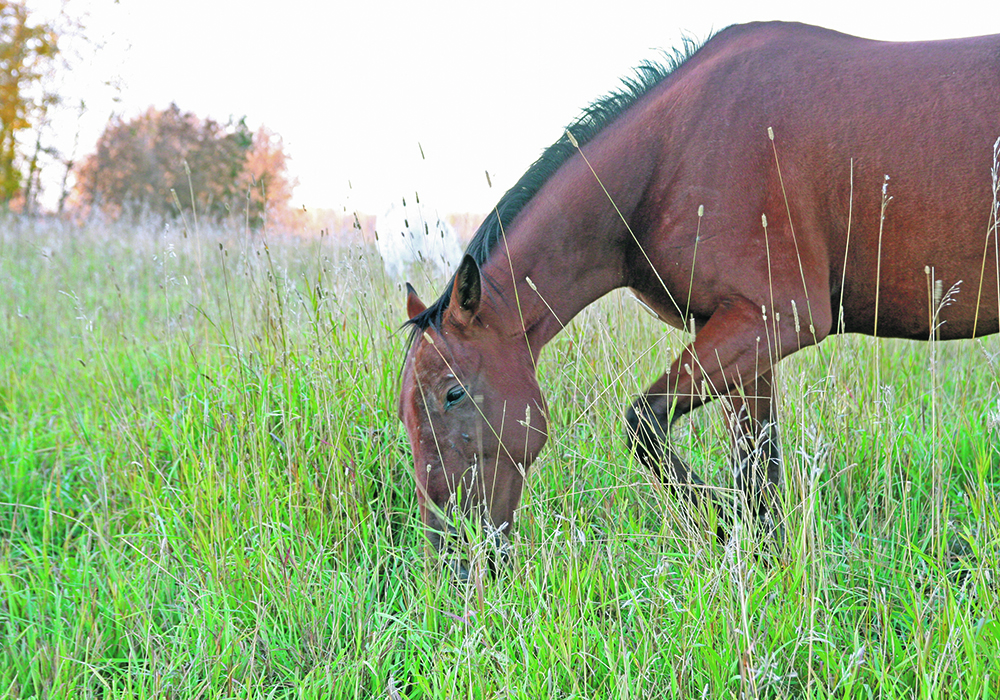A great Canadian horse study has just been published in the Canadian Veterinary Journal. This retrospective study used medical records of horses from 2000 to 2015 that were admitted to the Atlantic Veterinary College Veterinary Teaching Hospital for colic.
Colic is a general term used to describe pain in the abdomen and is a common occurrence in horses. Along with lameness, colic is one of the most concerning conditions for horse owners. Most often, colic is caused by issues in the guts but problems with the bladder, kidneys and uterus may also create significant abdominal pain that looks like more traditional colic. An examination and supportive tests are needed to differentiate the various causes of colic in horses.
Read Also

Beef check-off collection system aligns across the country
A single and aligned check-off collection system based on where producers live makes the system equal said Chad Ross, Saskatchewan Cattle Association chair.
The study was conducted at the Veterinary Hospital located in Charlottetown, P.E.I., which serves as a major equine surgical referral centre for all four Atlantic provinces. It included data from 575 horses, which is a substantial number to be included in a single study.
In terms of horse breeds, slightly less than one-third were Standardbreds, about 15 percent were Quarterhorses, while Warmbloods and Thoroughbreds made up roughly 10 percent each.
Half the horses in the study were mares, and the remainder were split between geldings and stallions, with more geldings than stallions. The general breed and sex breakdowns seem to be representative of the general horse population, although it is probable that more valuable horses are treated by the hospital compared to the total horse population in Atlantic Canada.
The most common diagnosis in the study was impaction colic, which occurs when the colon is filled with dried out feed material that bunches up and won’t pass (18 percent of cases). Impaction colics are often associated with dehydration, changing feed or limited water availability.
The next most common problems were twisting and abnormal location of the large colon.
Slightly less than one-quarter of all cases had no clear diagnosis. However, these horses with no clear diagnosis were much more likely to survive their bout of colic, with 83 percent surviving to hospital discharge. Another interesting result of this study was that 18 horses with stomach ulcers presented with signs of colic.
Using sophisticated statistical models, the researchers assessed factors associated with whether or not a horse was more or less likely to survive the bout of colic. Most importantly, the study identified that 74 percent of horses with colic that originated in the large intestine survived compared to only 36 percent of horses with disease in the small intestine. So horses that have impactions, twisting or displacement of the colon have a more favourable prognosis.
This result is consistent with general clinical knowledge and other studies conducted on horses elsewhere in the world.
Furthermore, horses with severe clinical signs of colic were less likely to survive. This confirms that the physical examination findings by veterinarians in cases of colic are important to determining prognosis.
The researchers also discovered that older horses and those displaying colic for more than 12 hours were less likely to survive.
Unfortunately, a major limitation of these types of retrospective studies is that they can’t determine if horses with small intestinal causes of colic and severe clinical signs of colic are more likely to die due to the disease itself or if people are more likely to euthanize these horses based on the diagnosis. A different study design is needed to answer these questions.
Reasons for euthanizing a horse with colic symptoms rather than pursuing treatment include the cost, risk of complications, other health issues and poor prognosis even with surgery.

















